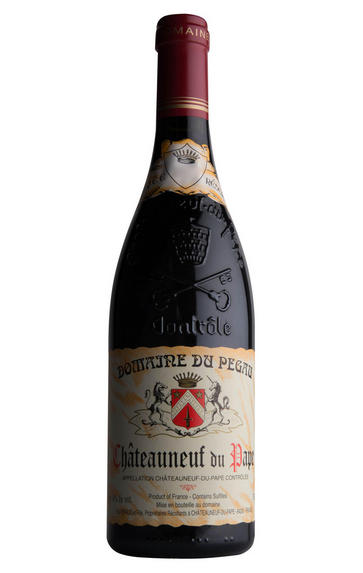
2010 Châteauneuf-du-Pape, Cuvée Da Capo, Domaine du Pegau, Rhône
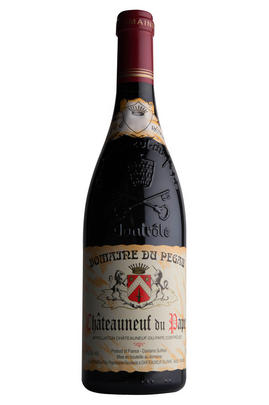
Critics reviews
Jeb Dunnuck - 31/10/2013
About this WINE
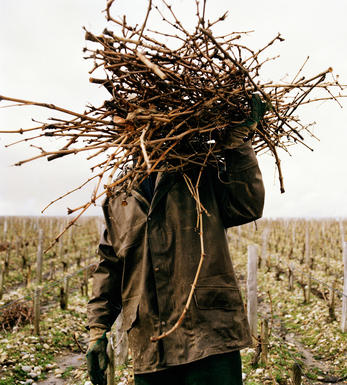
Domaine de Pegau
The Feraud family of Domaine du Pegau, including daughter Laurence and the father Paul, are fervent proponents of the most traditional wine-making style of Provence and Rhone. It is widely regarded as one of the leading producers in Châteauneuf-du-Pape. The property in Châteauneuf is made up of eleven separate vineyard parcels spread throughout the Courthézon,La Solitude and Bédarrides sector of the appellation.
The Châteauneuf red (a small quantity of white is also produced) is a blend of 75% Grenache, 20% Syrah, with the remaining 5% being made up of Mourvèdre, Counoise and other varieties. The grapes are hand harvested and are then fermented without being de-stemmed. The cuvaison lasts for 12-15 days and the wine is then aged for around 18 months in old oak foudres. No fining or filtration is carried out. The Cuvée Laurence is the same wine as the Cuvée Réservée but is kept in wooden cask for another 18-24 months before being bottled. These are rich, robust and concentrated wines, which tend to show at their best with 7-8 years of bottle age.
Pegau’s expanding wine production comprises the estate in Chateauneuf du Pape (approximately 47 acres) a vin de pays, a vin de table, a negociant label (Laurence Feraud, mostly Cotes du Rhones) and a second negociant line-up sold under the moniker Feraud-Brunel, which Laurence oversees along with Andre Brunel. Chateauneuf du Pape Cuvee da Capo is produced from the appellation’s well-known sector known as La Crau.
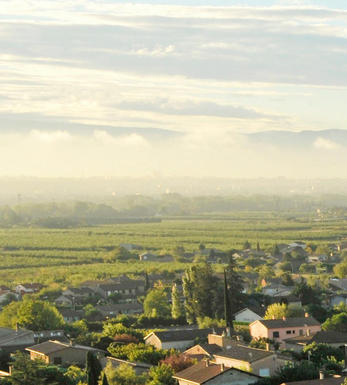
Châteauneuf-du-Pape
The most celebrated village of the Southern Rhône, Châteauneuf-du-Pape is the birthplace of the now indispensable French Appellation d’Origine Contrôlée system – imperfect though it may be. Compared to the Northern Rhône, the vineyards here are relatively flat and often feature the iconic galet pebbles – the precise benefits of which are a source of much debate. Minimum alcohol levels required by the AOC are the highest in France, but at 12.5% it is well below the natural generosity of Grenache, which only achieves its full aromatic potential when it is fully ripe and laden with the resultant high sugars. Syrah and Mourvèdre contribute the other defining elements in the blend, adding pepper, savoury spice and structure to the decadent Grenache. There are a further 10 permitted red grape varieties which can be used to adjust the “seasoning”. Of the five white varieties permitted, it is Grenache Noir’s sibling – predictably perhaps – Grenache Blanc, which dominates, though Roussanne shows a great deal of promise when handled well, notably at Château de Beaucastel.
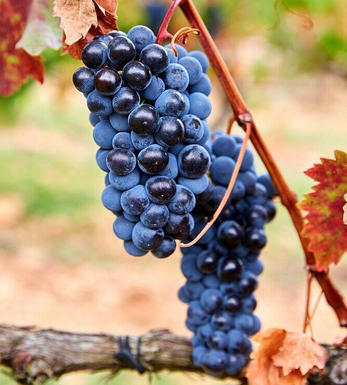
Southern Rhône Blend
The vast majority of wines from the Southern Rhône are blends. There are 5 main black varieties, although others are used and the most famous wine of the region, Châteauneuf du Pape, can be made from as many as 13 different varieties. Grenache is the most important grape in the southern Rhône - it contributes alcohol, warmth and gentle juicy fruit and is an ideal base wine in the blend. Plantings of Syrah in the southern Rhône have risen dramatically in the last decade and it is an increasingly important component in blends. It rarely attains the heights that it does in the North but adds colour, backbone, tannins and soft ripe fruit to the blend.
The much-maligned Carignan has been on the retreat recently but is still included in many blends - the best old vines can add colour, body and spicy fruits. Cinsault is also backtracking but, if yields are restricted, can produce moderately well-coloured wines adding pleasant-light fruit to red and rosé blends. Finally, Mourvèdre, a grape from Bandol on the Mediterranean coast, has recently become an increasingly significant component of Southern Rhône blends - it often struggles to ripen fully but can add acidity, ripe spicy berry fruits and hints of tobacco to blends.


Buying options
Add to wishlist
Description
Cuvée da Capo is, we very much hope, nothing to do with the Mafia, rather it is a single foudre of no specific provenance, which is selected only in exceptional years (2009, amazingly, did not make the cut) and aged for significantly longer than the Reservée. The resulting wine is often seen as the very best in the appellation. The 2010 is tighter than the Reservée, unsurprisingly, but behind the brooding beast there is an impressive fruit character….,the sweet and the savoury are rehearsing their pas de deux which will be sure to impress even the strictest of judges.
Simon Field MW, BBR Buyer, February 2012
One must always expect the unexpected chez Pegau. This time we were greeted by a disembodied voice, seemingly from a distant echo chamber. It turned out that Laurence was cleaning out a foudre, from the inside, and had overlooked our arrival time. This hands-on approach is typical of an extraordinarily energetic vigneronne, who has risen to the very top by a winning and somewhat paradoxical combination of dogged determination and sheer hard work, flavoured with a dose of humility. Pegau is now seen as the very best of the ‘traditional’ Châteauneuf wines, most eloquently illustrated by the 2010s.
wine at a glance
Delivery and quality guarantee